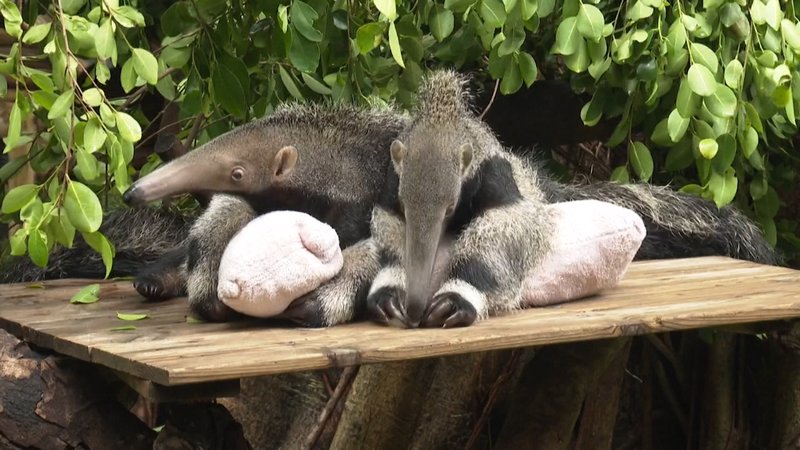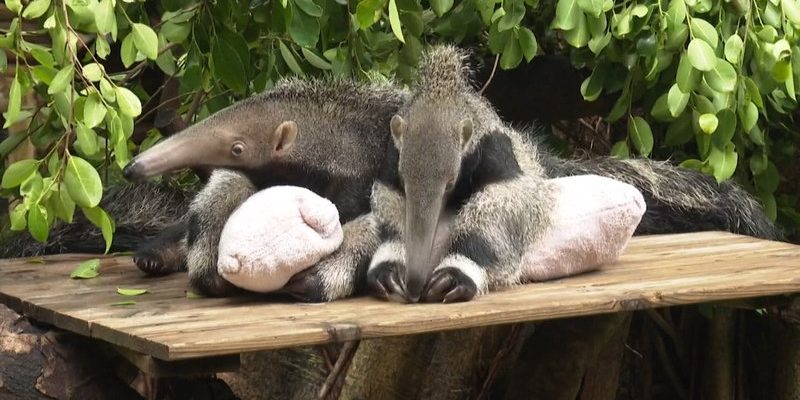
Encountering an anteater in the wild can be a thrilling yet puzzling experience. Honestly, it’s not every day you cross paths with such a unique animal. So, let’s break down what to keep in mind if you ever find yourself in this situation. Whether you’re a nature enthusiast or just curious, knowing how to behave can help you enjoy the moment while ensuring both you and the anteater stay safe.
Understanding Anteaters: A Quick Overview
Anteaters, particularly the *giant anteater*, are fascinating creatures native to Central and South America. With their long snouts and specialized tongues, they are true insectivores, primarily dining on ants and termites. You might be wondering, “What makes them unique?” Well, aside from their quirky appearance, anteaters possess a keen sense of smell that helps them locate food underground.
Their furry bodies and large claws serve important purposes, too. Those claws aren’t just for show; they help anteaters dig into ant mounds or tear apart termite nests. Interestingly, anteaters are usually solitary animals. They tend to roam alone in search of food, which can make a sighting even more special. Just picture yourself witnessing this intriguing creature in its natural habitat, peacefully going about its day.
Stay Calm: First Reactions When You Encounter One
The first rule of thumb when you spot an anteater is to stay calm. Yes, it’s exciting, but panicking won’t help the situation. Remember, anteaters are generally not aggressive unless threatened. Take a moment to breathe and enjoy the experience.
Once the initial excitement settles, observe from a distance. Keep in mind that anteaters prefer their space, much like we do. By remaining quiet and still, you can avoid startling the animal. For instance, if it’s foraging for food, your presence won’t bother it much as long as you keep your distance. Think of it as a chance to watch a nature documentary unfold right before your eyes!
Understanding Anteater Behavior
You might be curious about how anteaters behave in the wild. They have specific habits that can help you understand what to expect. When they’re searching for food, they might seem a bit clumsy, but that’s just part of their charm. Their long tongues can extend up to two feet, allowing them to reach deep into tunnels for ants and termites.
Sometimes, you’ll notice them using their front legs to dig, and they might even stand on their hind legs briefly to get a better look around. If an anteater feels threatened, it may puff up its fur and make a hissing sound, warning you to back off. Respecting these cues is key to ensuring a harmonious encounter.
What to Avoid When Encountering an Anteater
Just as you have a list of things to do, there are also important don’ts to keep in mind. First and foremost, don’t approach it. Getting too close can stress the animal and put you at risk, too. Anteaters rely on their claws for defense; if they feel cornered, they might scratch.
Another thing to avoid is feeding them. It’s tempting to want to interact, but feeding wild animals can lead to unhealthy habits and dependency. Plus, certain foods can be harmful to them. Keep your snacks to yourself and let the anteater continue its natural foraging behaviors. Imagine how it would feel if someone interrupted your lunch!
Documenting Your Encounter Safely
If you’re an avid photographer or simply want to remember the moment, capturing it on camera is a great idea! However, make sure to keep a respectful distance while doing so. Use a zoom lens if you have one, and avoid using flash—bright lights can scare animals away.
You might find it helpful to look for signs of the anteater’s behavior, such as where it’s digging or which direction it’s headed. Taking notes on its activities can also deepen your appreciation for how these creatures thrive in the wild. Honestly, just watching an anteater do its thing can be mesmerizing enough!
When to Seek Help: Signs of Distress
Sometimes, you might encounter an anteater that doesn’t seem well. If you notice an anteater facing difficulty moving or exhibiting unusual behavior, it’s important to know when to step in. Signs of distress could include limping, visible injuries, or a complete lack of reaction to your presence.
In such cases, it’s best to contact a local wildlife rescue or conservation group. These professionals have the training to assist injured animals safely. Reporting your findings can contribute to important wildlife conservation efforts, ensuring these amazing creatures can thrive in their natural environment.
Respecting Their Habitat: Eco-Friendly Practices
Lastly, it’s important to remember that anteaters and other wildlife need their habitats to remain intact. If you find yourself in areas where anteaters roam, make sure to practice eco-friendly habits. This includes staying on designated paths, avoiding littering, and not disturbing the vegetation.
Think of it this way: maintaining their habitat is like keeping your home clean and welcoming. The more we respect nature, the better we’ll be able to enjoy its wonders—anteaters included! Just imagine future generations having the chance to see these incredible animals in the wild, just like you did.
As you head out into nature, keep these tips in mind. Encountering an anteater can be a once-in-a-lifetime experience, and knowing how to interact can enhance your adventure. Whether it’s a quick glance or a closer observation, each moment spent with wildlife can be filled with learning and excitement. Enjoy your wildlife adventures, and may they be filled with memorable moments!

